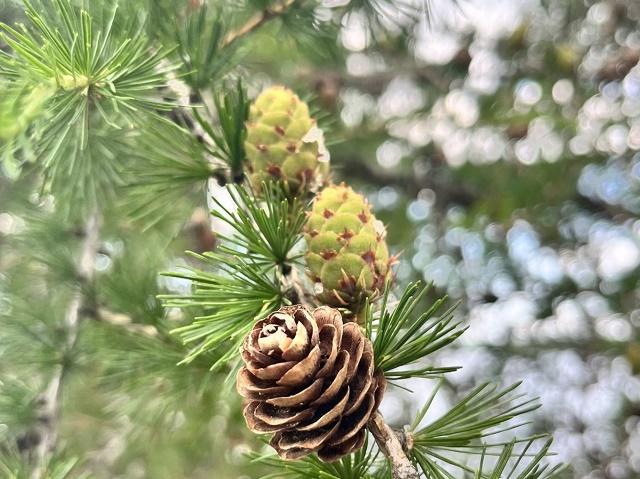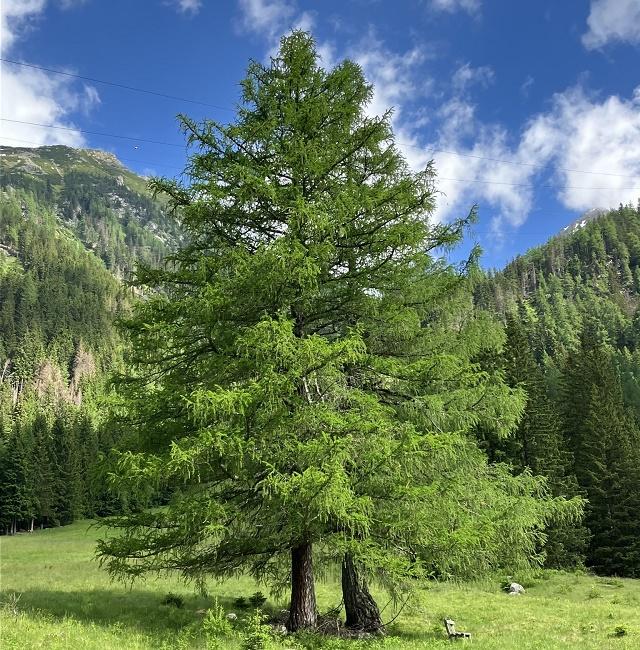Characteristics of European Larch (Larix decidua)

The European larch (Larix decidua) is a species of larch native to the mountains of central Europe, specifically in the Alps and the Carpathian and Pyrenees, with separate lowland populations in northern Poland and southern Lithuania. This tree is widely naturalized in Scandinavia.
European larch is cultivated as an ornamental tree for planting in gardens. This tree is also popularly used as a bonsai subject with group planting (forest bonsai style).
The life span of Larix decidua has been confirmed to be close to 1000 years but more often around 200 years. It is claimed that one of the larches planted by the second Duke of Atholl at Dunkeld in 1738 is still alive.
European larch is widely cultivated in southern Canada and the northeastern United States. It has naturalized in Maine, Michigan, New York, Connecticut, New Hampshire, Vermont, and Rhode Island. In the northern Appalachian Mountains, it is often used for surface reforestation of mines. European larch can grow in drier soil and tolerate a warmer climate than the native Tamarack (Larix laricina), as it is better suited to non-boreal climates.
The wood is strong and durable, flexible, and highly valued for yacht building. The European larch wood used for this must be knot-free, and can only be obtained from old trees pruned when young to remove side branches.
Due to its rapid growth and pioneering character, European larch has been widely used in forestry and agroforestry. It is used as a “preparatory species” to reforest open land, abandoned agricultural land, or disturbed land and as a “nurse species”.
Characteristics of European Larch Leaves

The leaves are needle-like, light green, 2-4 cm long, bright yellow in autumn, leaving pale yellow shoots until next spring.
Dimorphic shoots, with growth divided into long shoots (usually 10-50 cm) and having several shoots, and short shoots only 1-2 mm long with only one shoot.
Characteristics of European Larch Fruit

Cones erect, oblong, 2-6 cm long, with 10-90 seed scales erect or slightly curved. The cones are green or red when immature, turning brown and opening to release seeds when ripe. Cones ripen within 4-6 months after pollination. Old cones usually remain on the tree for years and turn a dull gray-black.
Characteristics of European Larch Tree

European larch belongs to large deciduous conifers up to 30-45 meters in height, with a trunk diameter of up to 1 meter (the tallest is up to 54 meters and 3.5 meters in diameter). The crown is conical when young, becomes broad with age, the main branches are flat, with the side branches often dangling.
It is very cold tolerant, able to withstand winter temperatures down to at least -50 °C, and is one of the deciduous trees of the Alps, reaching elevations of 2400 m asl, though it is most abundant at 1000-2000 m asl. It grows only in well-drained soil and does not like waterlogged and shade-intolerant soil.
Larix decidua is classified as a wild conifer, an invasive species that spreads to the highlands of New Zealand. It is planted by the New Zealand Forest Service for erosion control.
Leave a Reply